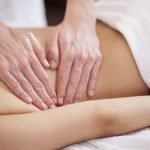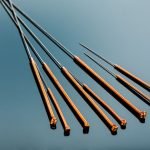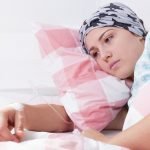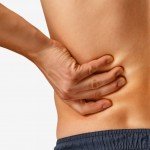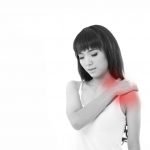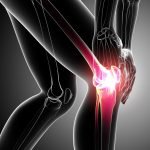Naturopathic Physical Medicine Treatments for General Practice
Eric Blake, ND, Dipl. Ac.
Naturopathic physical medicine has played a long and vital role in the healing arts. Hippocrates, in addition to recognizing his patients’ essential need for adequate rest, a quality diet, fresh air and hygiene, extensively advocated and employed manual therapy and allied physiotherapy techniques. In his writings, he declared that regular massage and manual therapy were key to good health (Casanova Lenti, 1990). When the Plague threatened Athens, he utilized artificial fever therapy treatments both to prevent and treat the epidemic (Casanova Lenti, 1993). His axiom, ‘Give me a fever and I can cure any disease,’ was one of the central clinical insights that united physicians of the 19th– and early 20th-century international natural medicine movement, particularly hydropathic physicians (Lindlahr, 1913; Carroll, 1942; Staden, 1902). The physicians of this movement would eventually find it necessary to christen a new and distinct professional title in the healing arts – that of the naturopathic physician (Spitler, 1948; Wendel, 1951).
Early 20th-century NDs utilized physical medicine extensively in practice (Lust, 1909; Staden, 1902). Hydrotherapy, osteopathy, massage and gymnastics, along with dietetics, hypnosis, psychotherapy and suggestion were the clinical methods of treatment taught at the first naturopathic college, led and organized by physicians Regeniter and Lust (Lust 1901). Other physician groups, such as homeopaths and phytotherapists, would eventually integrate into the larger naturopathic profession, preparing the soil for the modern, diverse and eclectic field we see today (Brinker, 1998; Spitler, 1948).
Even a casual perusal of the extensive naturopathic professional case literature will reveal that naturopathic physical medicine techniques, such as hydrotherapy, massage, mechanotherapy, electrotherapy, exercise therapeutics, breathing therapies, light therapy, clay and more have formed an important role in clinical naturopathic treatment throughout the 20th century. Acute infectious, epidemic infectious and chronic degenerative, metabolic, endocrine and autoimmune disease case reports applying naturopathic approaches to physical medicine permeate the record, as well as cases involving treatment of musculoskeletal disorders (Watrous, 1996; Lindner, 1964; Lust, 1909; Clements, 1926; Wesselhoeft et al., 1856; Metcalfe, 1902). This field of clinical approach has been referred to as the physical-dietetic approach (Lust, 1909), or more recently by Dr. Carlos Casanova Lenti of Lima, Peru, as ‘Hippocratic Naturistic Medicine’ (Casanova Lenti, 1986).
Published case reports, and outcome and evaluation analysis of series’ of cases, have played an important role in the naturopathic profession. This case-based approach has long been utilized as a means to evolve the science of diagnosis and predicted clinical outcomes of therapeutic intervention (Deck, 1954; Kriege, 1985; Lust, 1909, 1940; Staden, 1902, Metcalfe, 1902; Watrous, 1996; Wesselhoeft et al., 1856; Clements, 1926; Lindner, 1964; Armstrong, 1940; Schippell, 1956).
One of the hallmark principles of naturopathic physical medicine is the holistic principle, or the ‘constitutional’ principle. For example, constitutional hydrotherapy, neuro-muscular technique and the general naturopathic tonic treatment (a series of manual therapy movements that gently mobilizes all major joint articulations of the spine and extremities) all retain a whole body, whole body-mind, holistic or ‘constitutional’ approach. This holistic constitutional approach then allows for individualized treatment (Chaitow, 2002, 1987; Cordingley, 1925).
Several of these techniques and clinical methods have long continued to be refined, taught and practiced by physicians and have been in uninterrupted clinical use for well more than a century, many of their component elements for centuries longer. The accompanying three clinical cases incorporate various aspects of naturopathic physical medicine as a principal clinical intervention within the context of a comprehensive treatment plan.
Case Study 1: Lobar Pneumonia
A 25-year-old man presented with a productive cough with green sputum and a mild fever of 99.5 degrees Fahrenheit (F). The patient was an otherwise healthy, active male who practices yoga and capoeira, and is attentive to natural self-health care. The patient’s iris indicates a grade 1 Lymphatic constitution (Hauser, 2000) with a basic diagnosis classification moral/endocrine base, mental/respiratory first inclination, physical/digestive second inclination (Havard, 1920). Patient became ill in the previous 24 hours with sudden onset of symptoms. Lung exam revealed increased bronchio-vesicular sounds, but otherwise clear to auscultation, and negative for egophony. A standard constitutional hydrotherapy treatment with 10 minutes of diathermy (intensity level III of IV) to the bronchi was administered. In addition, an herbal respiratory tincture and whole foods glandular immune and endocrine support formula were prescribed, and a liquid diet focusing on chicken broth and steamed vegetables was advised.
On day three, the patient returned for treatment and reported a fever of 101-103 degrees F over the past two days. He did not report any shortness of breath, but a more significant cough was present. Lung exam revealed diffuse wheezing throughout the lung fields, and was positive for egophony over the right lower lobe. A CBC with chem screen was ordered, and a lung glandular was added to the prescription. The standard constitutional hydrotherapy with diathermy was repeated, with placement of one of the diathermy heads over the involved lobe and the other over the bronchi. The patient was advised to fast only on water until the fever abated.
The CBC report showed a high total bilirubin of 1.9 (Normal = .2-1.3), high LDH of 197 (N 80-180), low platelet count of 138 (N 155-386) and normal WBC of 4.8 (N 3.7-10.5), with a high percentage of granulocytes at 80.6% (N 44-74). A chest x-ray was ordered, and a right lower-lobe opacity was identified consistent with pneumonia.
On day five, the patient reported blood in the sputum and sweating at night. On exam, a right pleural rub was noted, and egophony was still present. Despite the symptoms’ severity, the patient reported that overall he felt he was getting better, especially as the sputum was expectorated. We discussed the x-ray findings, and a PARQ was given. The same physiotherapy treatment was administered.
On day seven, the patient was tired and his chest felt tight, but he felt better overall, there was no more blood in the sputum, and he was afebrile (98.5F po). The lung fields were clear to auscultation. He was instructed to slowly introduce vegetable and chicken broth, and then steamed vegetables if his temperature remained below 99.0 F po.
That was his last clinical treatment. During a follow-up phone call several days later, the patient reported resolution of his cough. Three weeks later, he reported that after the 7- to 10-day course of the initial complaint, he was fatigued for an additional week, then his normal energy returned.
The use of diathermy in the management of pneumonia was first studied in a hospital case analysis series, and mortality dropped from 43% to 19% (Stewart, 1923).
Case Study 2: Ulcerative Colitis
A 60-year-old woman presented to the office reporting a 20-year struggle with ulcerative colitis. She had tried multiple naturopathic and allopathic approaches throughout that time. A recent colonoscopy reported significant inflammation and hemorrhage throughout the entire mucosal surface of the large intestine. Because of the inability to adequately control the inflammation for any extended period of time to date, her attending physician, a DO, advised total colectomy as the next necessary step. The patient reported 8 to 14 daily bowel movements that are murky and completely unformed, with significant and visible blood and mucous at each action. She was taking homeopathic Ferrum phos 3x, an okra-based gastrointestinal demulcent, fish oils, bile salts, adrenal glandular, echinacea capsules, potassium, naltrexone, was using an estriol cream, thyroid one grain and acidophilus.
Food intolerance testing was positive for fruit and the combination of potato with grains. A simple diet of steamed vegetables and vegetable broth was initially advised. Antigen antibody testing revealed a positive reaction to a homeopathic tubercular strain. Further treatment recommendations included homeopathic desensitization to the tubercular strain, strict food intolerance avoidance, wheatgrass juice 100ml daily and clinical constitutional hydrotherapy treatments twice weekly for 10 weeks.
Constitutional hydrotherapy is a systematic approach to the application of various physiotherapy modalities in combination with a variation of the Kneipp torso pack (Scott, 1990; Blake, 2006). The physiotherapy treatment system was developed and refined over several decades by the late Dr. OG Carroll. ‘Standard’ constitutional hydrotherapy includes sine wave stimulation of spinal nerves to elicit gastrointestinal smooth muscle contraction and tonification of the normal peristaltic rhythm. Because of the tender, inflamed and actively hemorrhaging tissue of this patient, appropriate variations were made to the standard treatment to avoid exacerbating the physical pathology.
At the first two treatments, the standard constitutional towel treatment (5/10) was applied to the front of the torso, followed by high frequency to the abdomen for 10 minutes, and finishing with the standard constitutional towel treatment to the back. No sine wave stimulation was used. At the third and subsequent treatments, a similar procedure was administered, but the high frequency was replaced with continuous short-wave diathermy at a dose intensity of level III of IV (heating). This treatment (towels front, diathermy to abdomen, towels back) was delivered twice weekly for a total of 22 clinical treatments.
During this period of treatment, the potassium and naltrexone were discontinued. An herbal boswellia combination formula was instituted, as well as slippery elm gruel and an adrenal herbal tincture.
At the third clinical treatment, the patient reported a solid bowel movement with no cloudiness. A similar report was made at the fourth treatment. At this visit, the patient also reported that she no longer sees blood in the stool. At the fifth clinical treatment, she reported daily formed bowel movements that are frequent, small and very dark. She also reported a mild energy increase.
Stool frequency consistently decreased, to an average of 3 to 5 per day. Improvement continued, and by the 14th clinical treatment, the patient was having one to two formed bowel movements, with no visible blood or mucous. Over the course of the next eight clinical treatments, the stool frequency decreased further to zero to two per day, unless she was exposed to her food intolerances, when the stool frequency would briefly rise to as high as four in one day.
Clinical report of the efficacy of diathermy in various forms of colitis dates to at least the 1940s. (Abbott, 1945; Johnson, 1939).
Case Study 3: Hypertension
This brief case demonstrates rapid results that can be useful for short-term intervention. A 42-year-old man presented with self-reported uncontrolled hypertension of 160/100. A digital acoustic cardiograph showed a lengthening of the S1 tracing of the aortic valve (calcium deficiency) and an increase in the amplitude of the S2 tracing (adrenal) in all four cardiac valves. Ragland’s calcium cuff test was 130, far short of the 200-220 generally accepted as normal.
Blood pressure was measured at 170/110 mmHg. Naturopathic manipulation of the third thoracic was performed, using Cordingley technique (Cordingley, 1925). Blood pressure after the adjustment was 150/100 mmHg. Pulsed short-wave diathermy was applied to the spine with a dual inductive head unit at an intensity level of mild heat perception (Dose II of IV) for 10 minutes. Following the spinal diathermy, a single inductive head was applied to the abdomen for 10 minutes at a similar intensity level. Blood pressure was 130/90 mmHg after diathermy, and the patient described a general sense of improved well-being. A more comprehensive treatment plan was formulated, including regular office treatment.
Diathermy was at one time considered a sovereign remedy for hypertension (Cordingley, 1925).
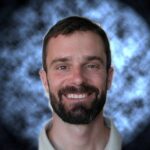 Eric Blake, ND, Dipl. Ac. is a co-editor of the upcoming textbook Naturopathic Physical Medicine, is history editor for the Foundations of Naturopathic Medicine project, and is author of Constitutional Hydrotherapy: A Workbook of Clinical Lessons. He is adjunct clinical and academic faculty at NCNM, teaching history and naturopathic hydrotherapy, and coordinating supervisor of the NCNM Natural Health Center hydrotherapy department. He is in private practice in Portland, OR.
Eric Blake, ND, Dipl. Ac. is a co-editor of the upcoming textbook Naturopathic Physical Medicine, is history editor for the Foundations of Naturopathic Medicine project, and is author of Constitutional Hydrotherapy: A Workbook of Clinical Lessons. He is adjunct clinical and academic faculty at NCNM, teaching history and naturopathic hydrotherapy, and coordinating supervisor of the NCNM Natural Health Center hydrotherapy department. He is in private practice in Portland, OR.
References
Abbott GK: Physical Therapy in Nursing Care, Washington D.C., 1945, Review and Herald Publishing Company.
Armstrong J: Case histories of leukemia, Naturopath and Herald of Health June:170-3, 1940.
Blake E: Constitutional Hydrotherapy: A Workbook of Clinical Lessons. Portland, 2006, Blake.
Brinker F: The role of botanical medicine in 100 years of naturopathy, HerbalGram 42:49-59, 1998.
Carroll OG: The House of Carroll, Spokane, 1942, patient educational literature.
Casanova Lenti C: Naturopathy According to Hippocrates, Lima, Peru, 1990, CCL.
Casanova Lenti C: Naturismo Hipocratico : Su Revaluacion e Introduccion en La Medicina Global, Lima, 1986, CCL.
Casanova Lenti C: Hippocrates of Cos: The Genius of Perennial Science, Lima, 1993, CCL.
Chaitow L: Soft-Tissue Manipulation: A Practitioner’s Guide to the Diagnosis and Treatment of Soft Tissue Dysfunction and Reflex Activity, Wellingborough, Northamptonshire ; Rochester, VT, 1987, Thorsons.
Chaitow L: Clinical Application of Neuromuscular Techniques, Edinburgh, New York, 2002, Churchill Livingstone.
Clements GR: The true science of naturopathy, Nature’s Path: 74-76, 1926.
Cordingley EW: Principles and Practice of Naturopathy: A Compendium of Natural healing. O’ Fallon, Bazan, 1925, Health Research.
Deck J et al: Clinical Proof of Organ and Disease Signs in the Iris: 640 cases. Germany, 1954, Haug Verlag.
Havard W: A course in basic diagnosis, Naturopath and Herald of Health XXV(1), 28-33,1920.
Hauser W: Information from Structure and Colour. Heimsheim, 2000, Felke Institut.
Johnson AC: Principles and Practice of Drugless Therapeutics, Los Angeles, 1939, Chiropractic Educational Extension Bureau.
Kriege T: Disease Signs in the Iris: Interpretation and Medication. Romford, 1985, Fowler.
Lindlahr H: Nature Cure: Philosophy and Practice Based on the Unity of Disease and Cure, Chicago, 1913, Nature Cure Publications Company.
Linder P: Pulsed short wave therapy results of over 300 clinical cases in private practice, American Naturopath Sept., 16-17, 1964.
Lust B: How to protect ourselves against cerebro-spinal meningitis, The Naturopath and Herald of Health Jan., 6-8, 1909.
Lust B: Lust & Regeniters Naturopathic College, The Kneipp Water Cure Monthly, (regularly appearing advertisement), 1901.
Lust B: Prospectus of the New York Naturopathic Institute and College, The Kneipp Water Cure Monthly 197-199, 1901.
Lust B: Tonsil clinics, and not tonsils, should be extirpated. Case series review of tonsillectomy in relation to polio onset, Naturopath and Herald of Health May, 133,144, 1940.
Metcalfe R: The sweating cure of hydrophobia, 5 cases, Naturopath and Herald of Health III(4):172-174, 1902.
Schippell TM: The importance of case histories, Naturopath Section G, Vol 59, April 1954.
Scott LM: Clinical Hydrotherapy, Spokane 1990, Leo M. Scott.
Spitler HR: Basic Naturopathy: A Textbook, New York, 1948, American Naturopathic Physicians and Surgeons Association.
Staden L: What is naturopathy?, The Naturopath and Herald of Health Jan III(1):15-18, 1902.
Staden L: How naturopathy cures, The Naturopath and Herald of Health Jan III(4):190-193, 1902.
Stewart HE: Diathermy and its Application to Pneumonia, New York, 1923, P.B. Hoeber.
Watrous L: Constitutional hydrotherapy: From nature cure to advanced naturopathic medicine, Journal of Naturopathic Medicine 7(2):72-79, 1996.
Wendel P: Standardized Naturopathy: The Science and Art of Natural Healing, Brooklyn, 1951, Wendel.
Wesselhoeft et al: The Water Cure in America: Over 300 Cases of Various Diseases Treated with Water, New York, 1856, Fowler and Wells.




